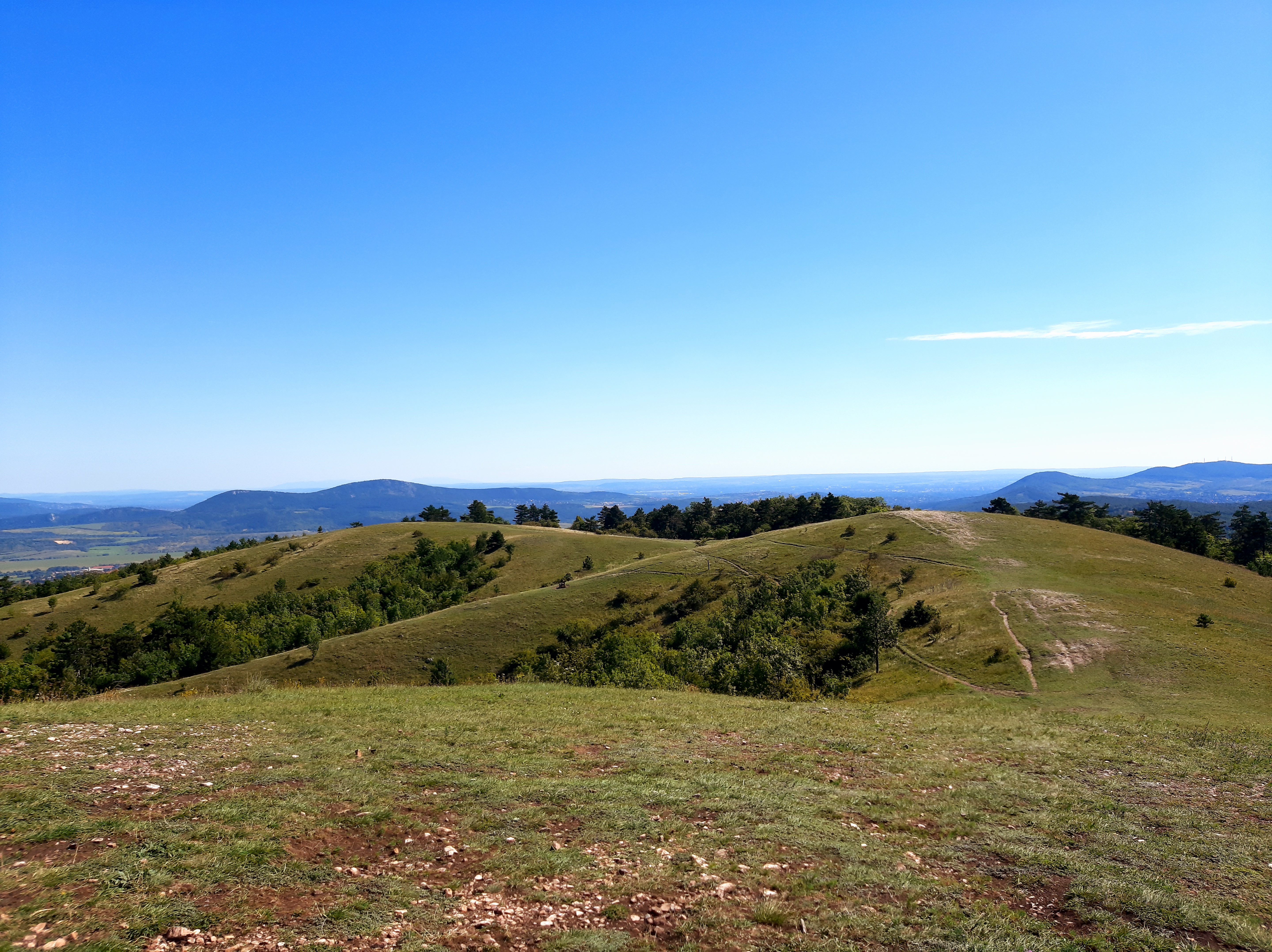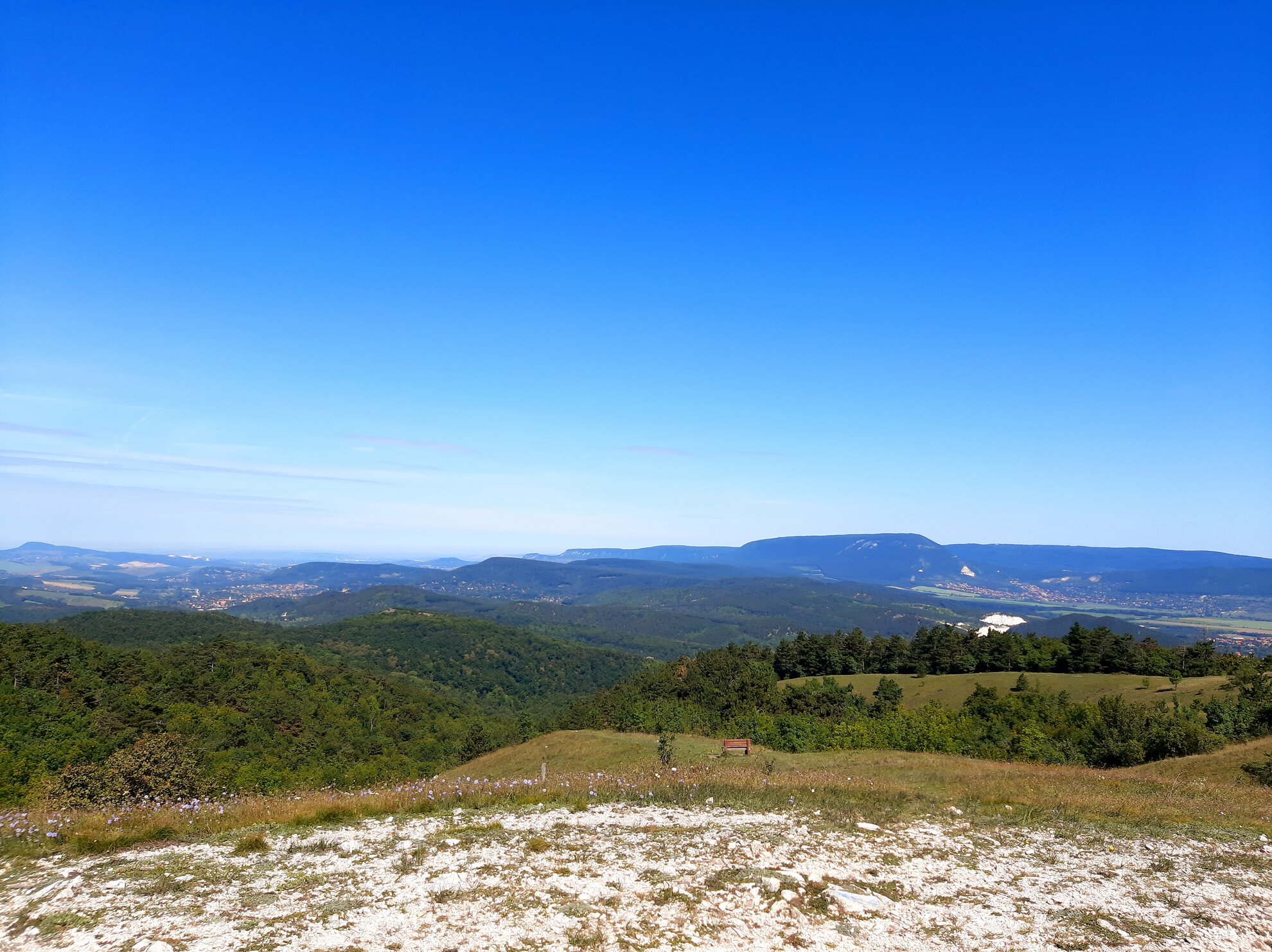
Located six kilometres outside Budapest, Nagykovácsi, from which the trailhead launches, is a one road in and out village. In fact, it is one of the highest settlements in Pest county, and bordered on all sides by the Budai Tájvédelmi Körzet (Buda Landscape Protection Area) and hills. The two main attractions here are Nagy-Kopasz hill with its Csergezán Pál Lookout Tower, and Nagy-Szénás. Here, the unique flora and fauna earned the area a European Diploma, the highest European award for protected areas. Its grassy hillsides sport rare and valuable plant life, but let us have no illusions: the bare slopes are the direct result of human deforestation, and soil erosion is a big problem.
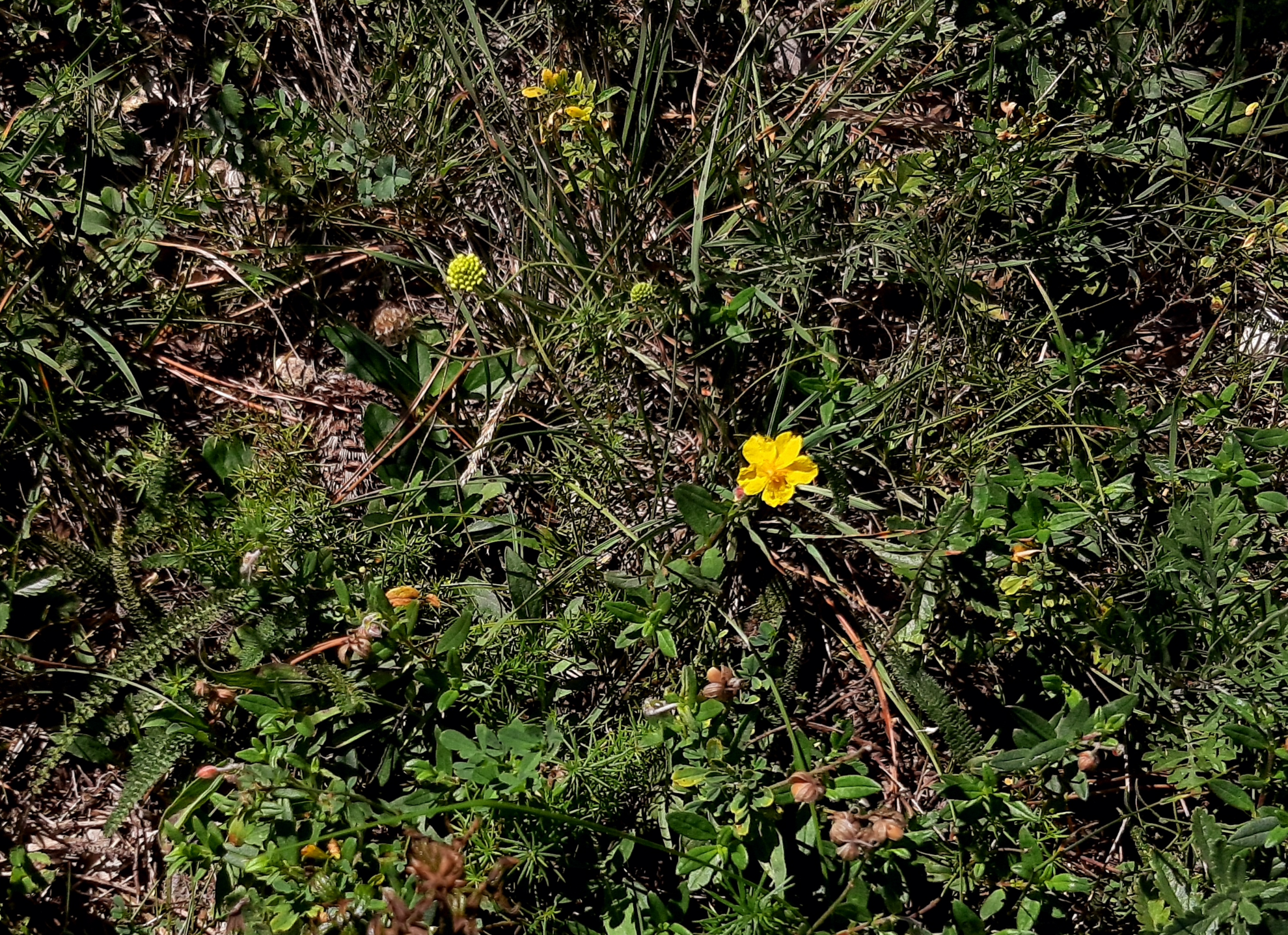
These meadows are exposed to the elements, which makes it hard for woody plants to get a footing in the soil. In turn, the unique herbaceous plants which survive here are uniquely special. For example, on these rocky, dolomite grasslands, you find small yellow pilisi flax, unique to Hungary. Other protected plants here include the white helleborine, a species of orchid, as well as Hungarian gorgolya, military orchid and King St Stephen’s carnations.
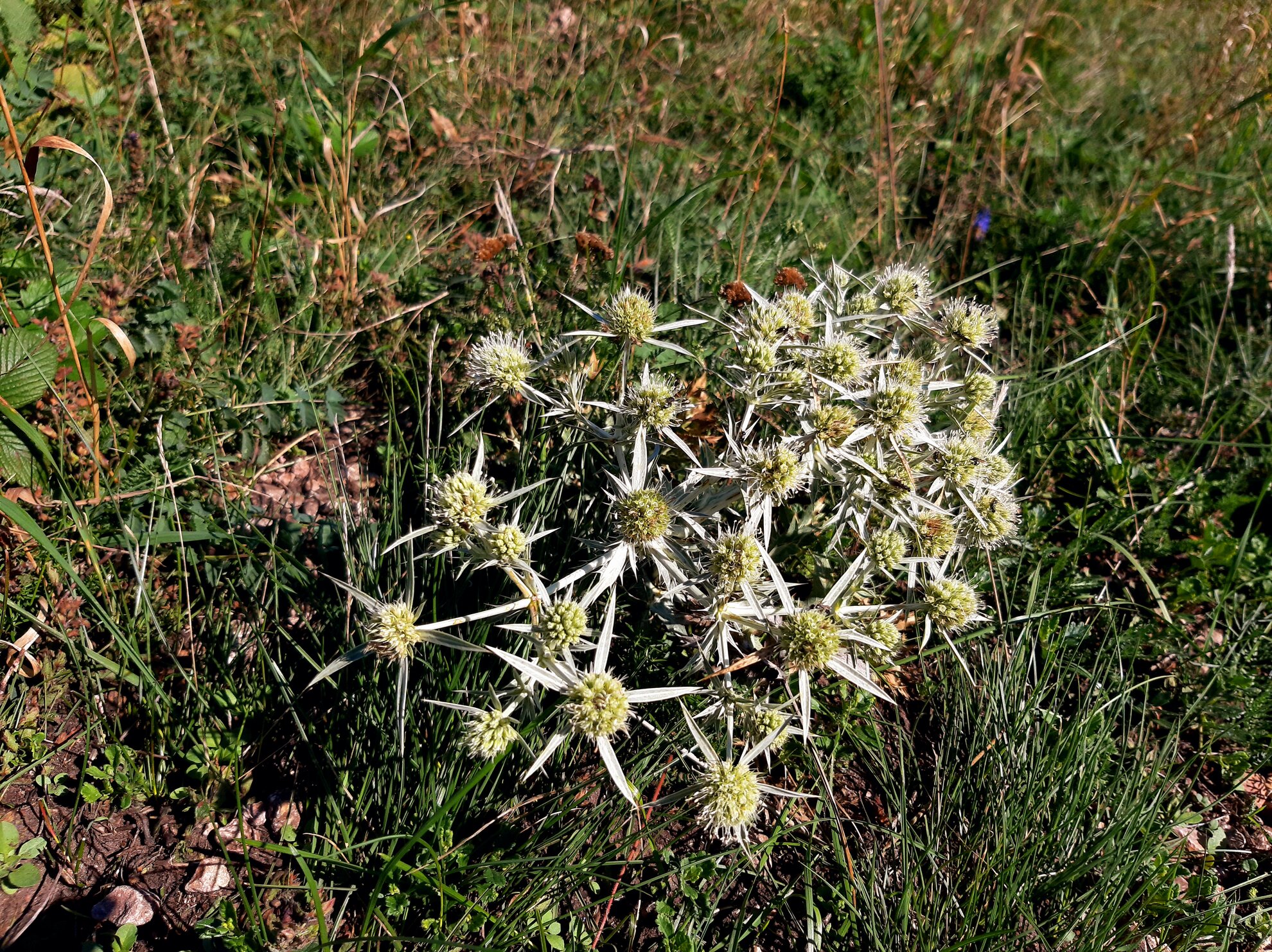
On the north side you do find forested areas, however, where Buda rowan are covered in their distinctive red berries. A sign at the beginning of Nagy-Szénás indicates their presence. In theory, this should lead you through the area, but in reality, the signage is still quite patchy, without clear directions for tourists.
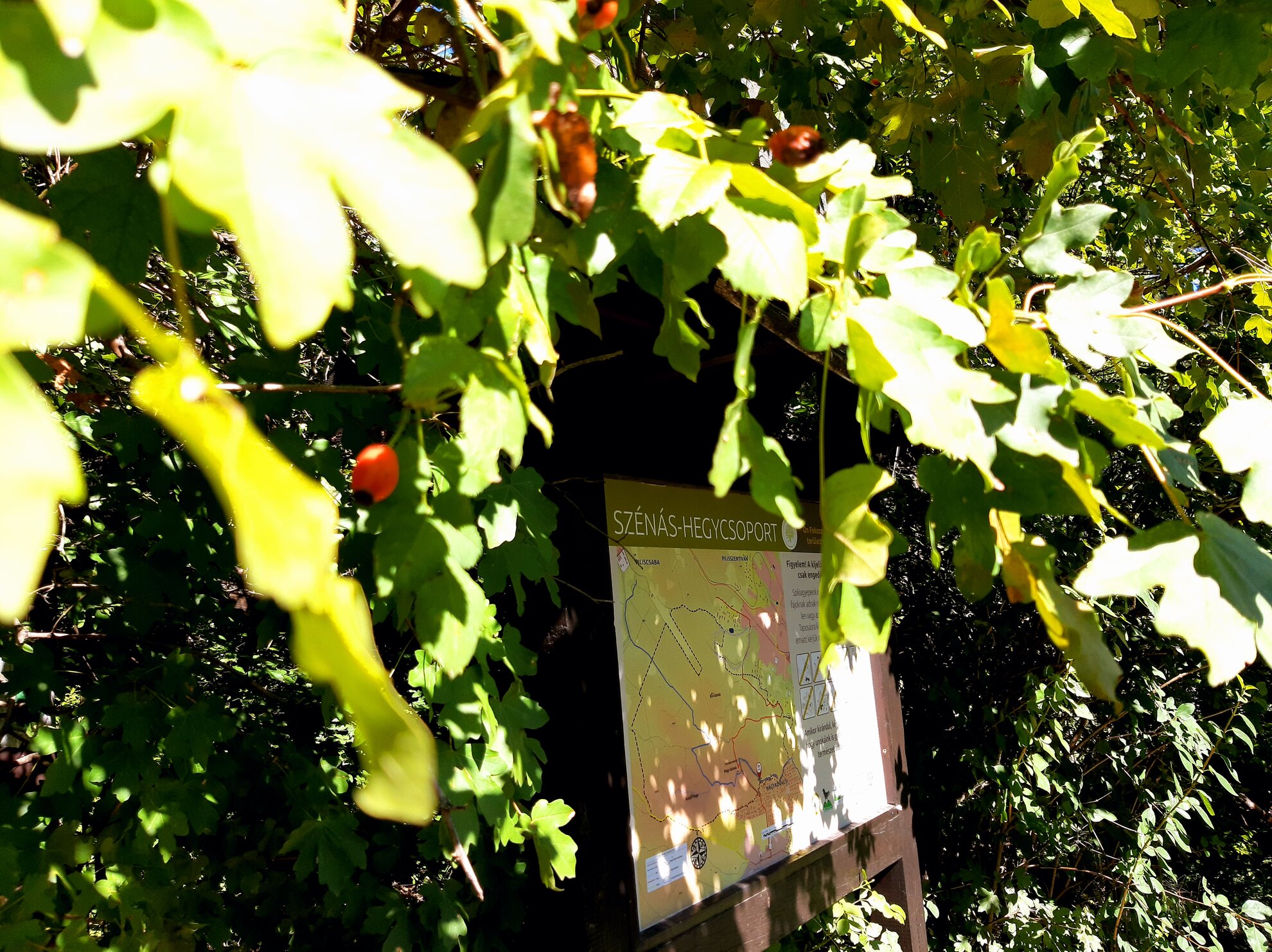
Those arriving by public transport should take the tram to Hűvösvölgy, continuing then via the 63 bus to Nagykovácsi. An extension ticket is necessary along with a normal BKK ticket or pass. Alight at the Nagykovácsi, községháza bus stop, and then turn down Antónia utca and continue past the cemetery, heading north along Bánya utca, Zsíroshegyi utca and Gémeskút utca. Suddenly the edge of the forest arrives, with the Nature Reserve sign visible. A loop covered with fallen trees is marked by a sign which indicates the start of the trail.
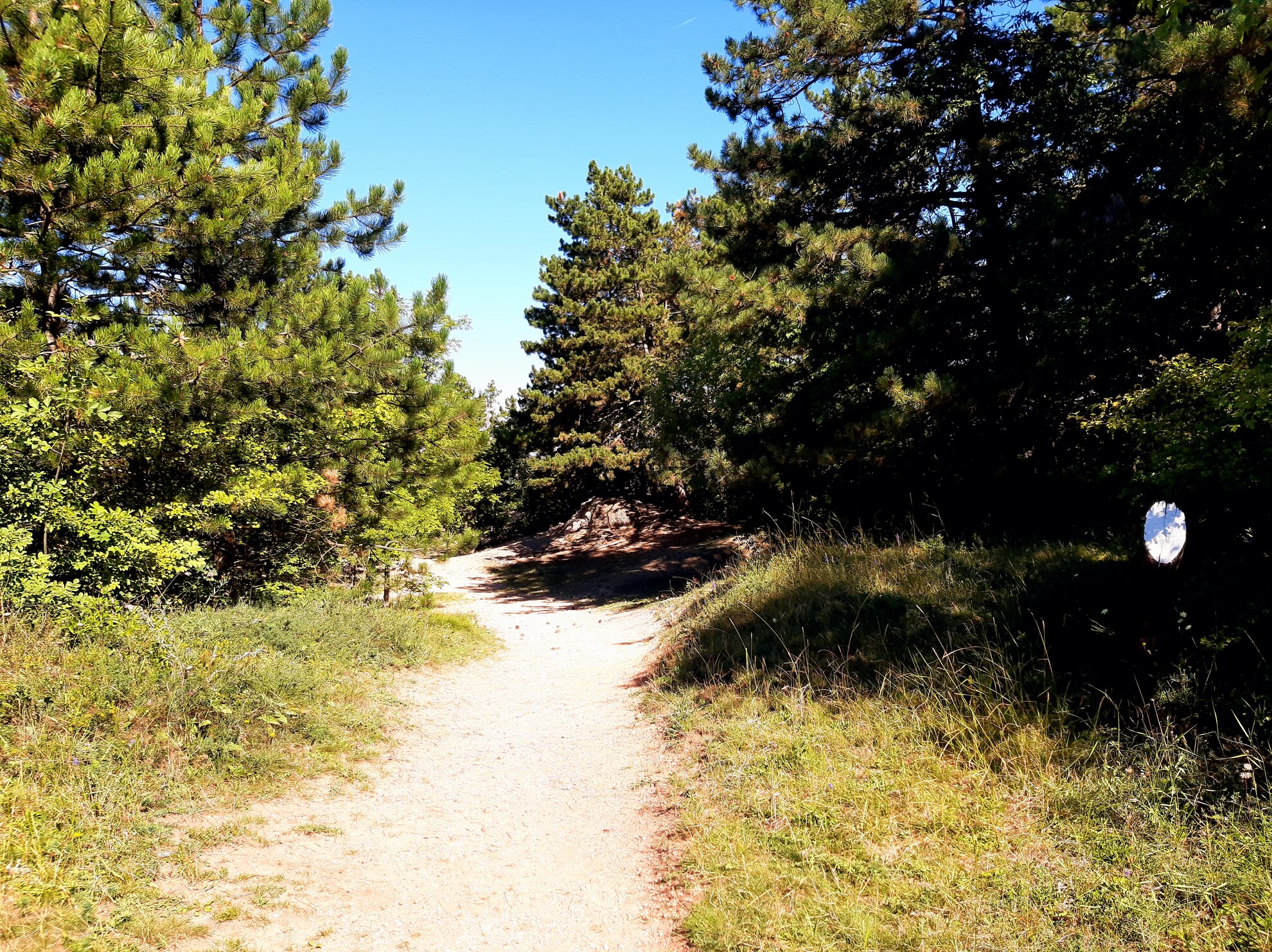
The path initially leads to a partially inhabited area, and from there the way gets steeper, up a gravel road, the scent of pine gradually dominating the air and giving the impression of Mediterranean cliffs. Conifers line the way, the ground is sprinkled with pinecones and barren areas open up spotted with dolomite rocks, with a panoramic view appearing before you. Everywhere is serenity, with softly whispering winds and bushes popping up the farther you go. Eventually, you see the signpost which reads Tanösvény, 'nature trail' – but only leads to a panoramic view, instead.
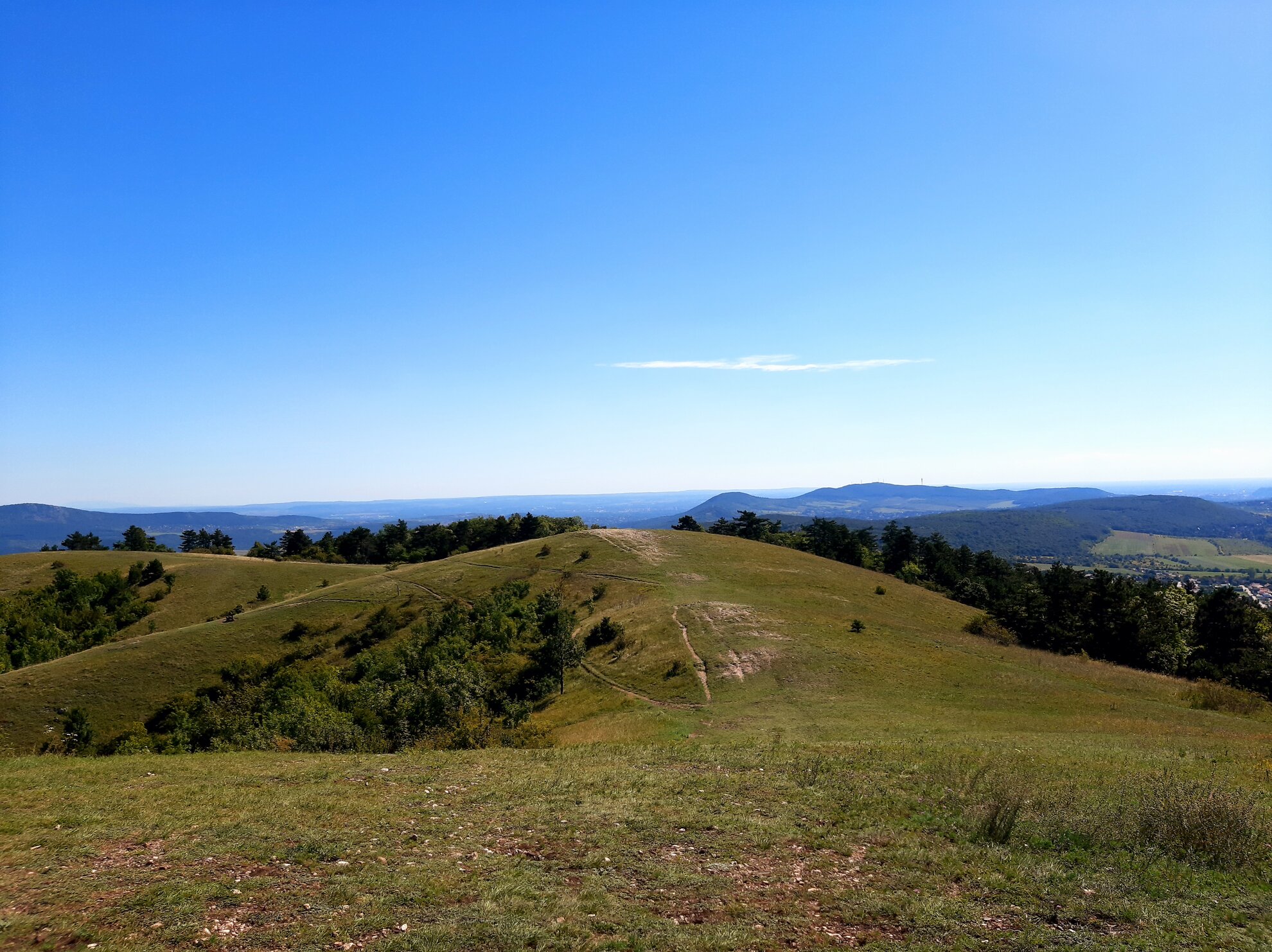
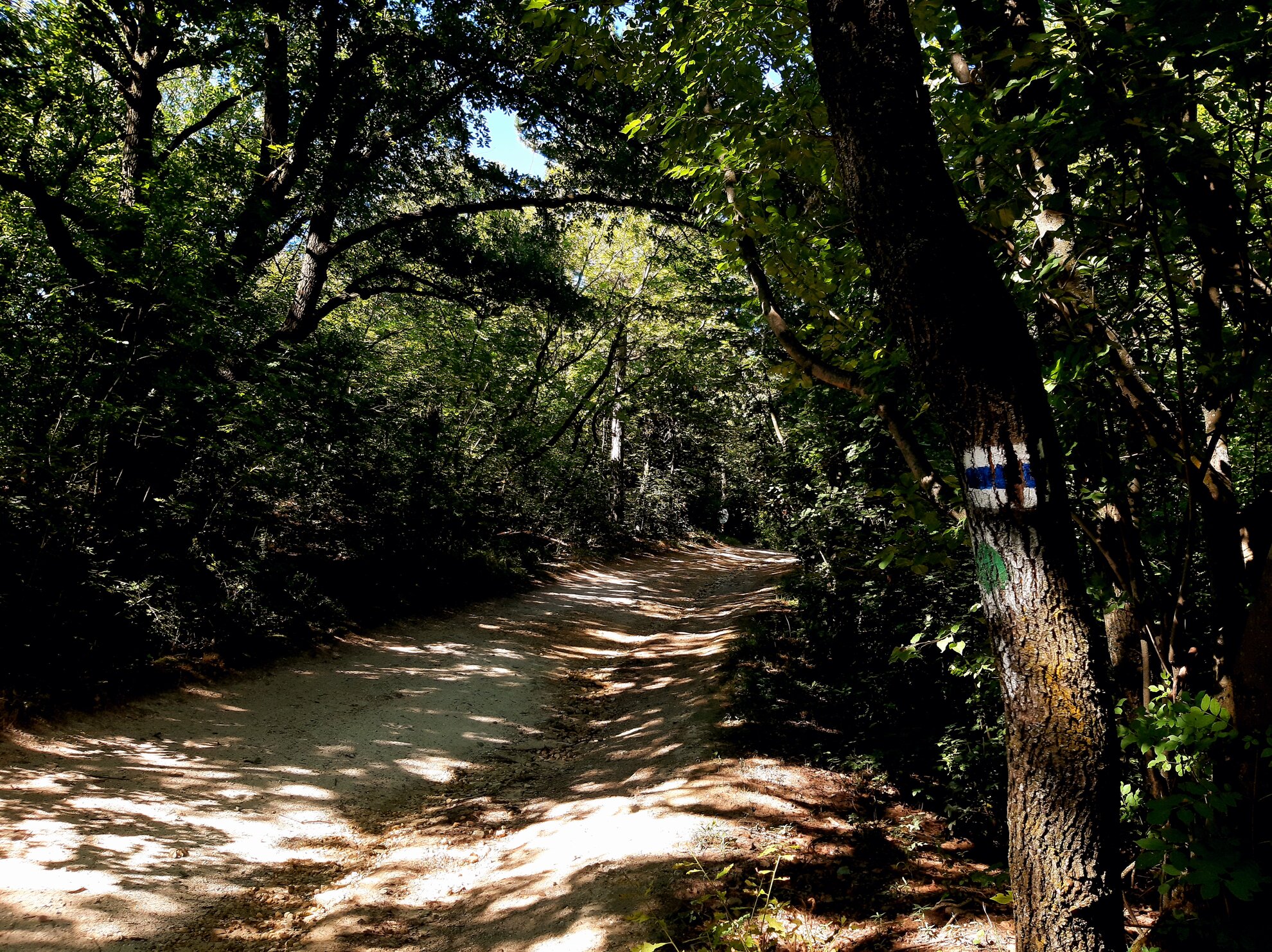
It takes about half an hour to reach the top of the ridge, with the summit of Nagy-Szénás marked by a cross. Before climbing to the left at the blue sign, you can take a look at the memorial wall marking the site of the former Nagy-szénási tourist house, built by the Munkás Testedző Egyesület Turista Szakosztálya ('Tourist Department of the Workers’ Association for Physical Exercise') in 1926. Ironically, in the '70s, the Budapest Communist Party Committee demolished its ruins, probably out of paranoia.
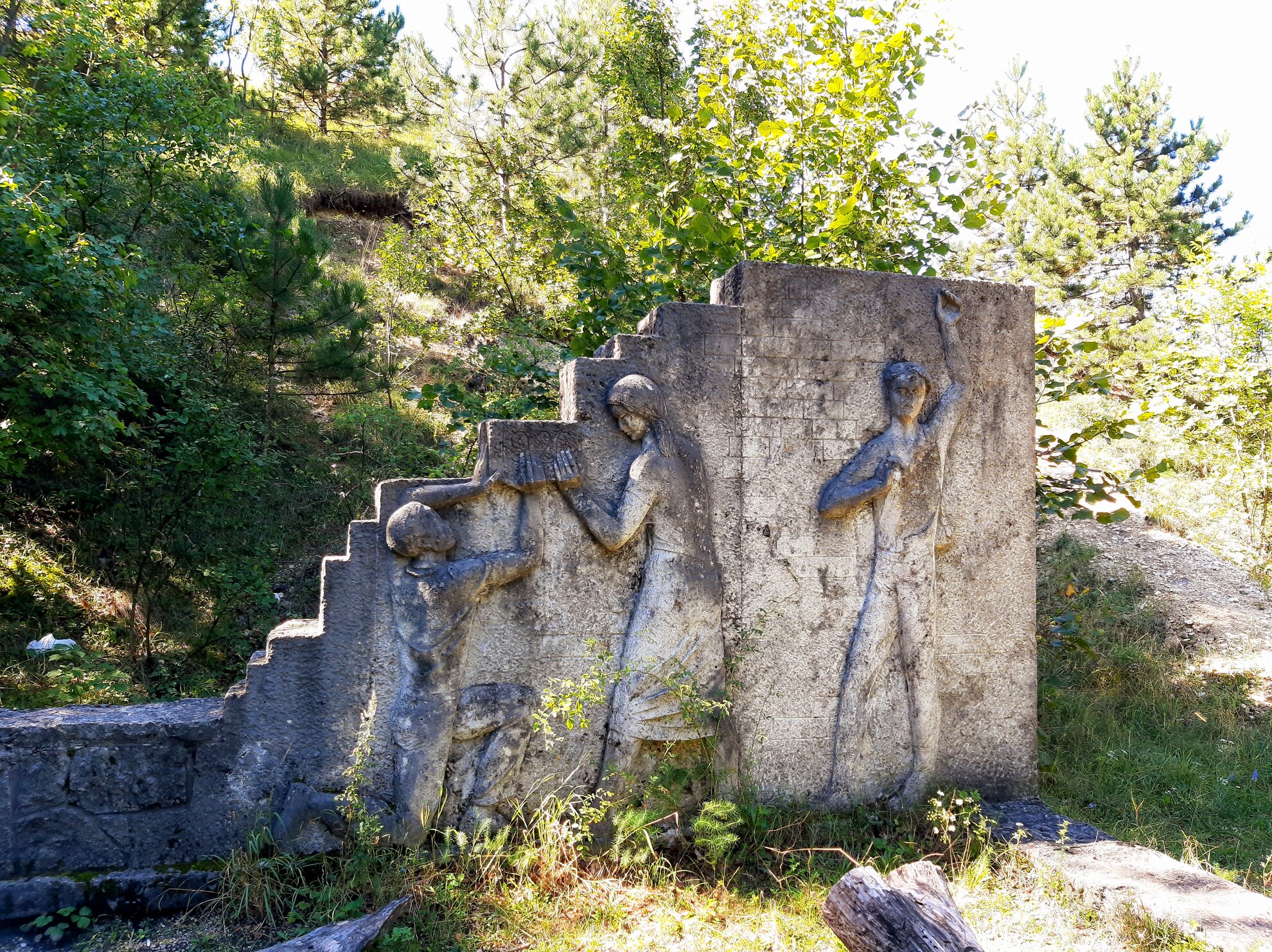
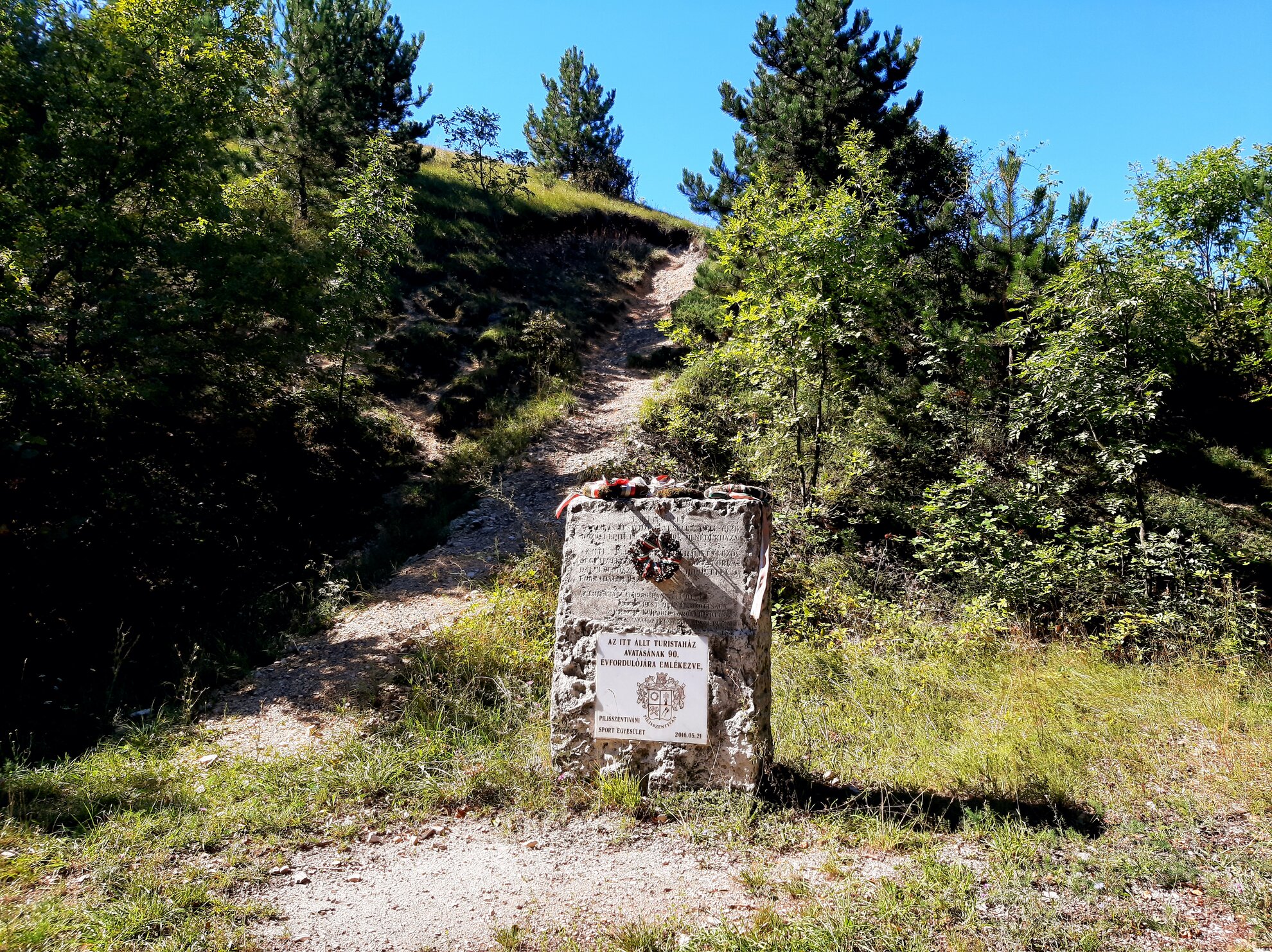
Nagy-Szénás is a bit like camel humps, or lawn-covered sand dunes, but by no means is the sight common in the Hungarian uplands. In the Buda Hills, a rare, undisturbed, 360-degree panoramic view unfolds in front of you from the bare hilltops. Wherever you look, the excursion provides unforgettable moments at this point. There is also a small bench below, from which you take it all in.
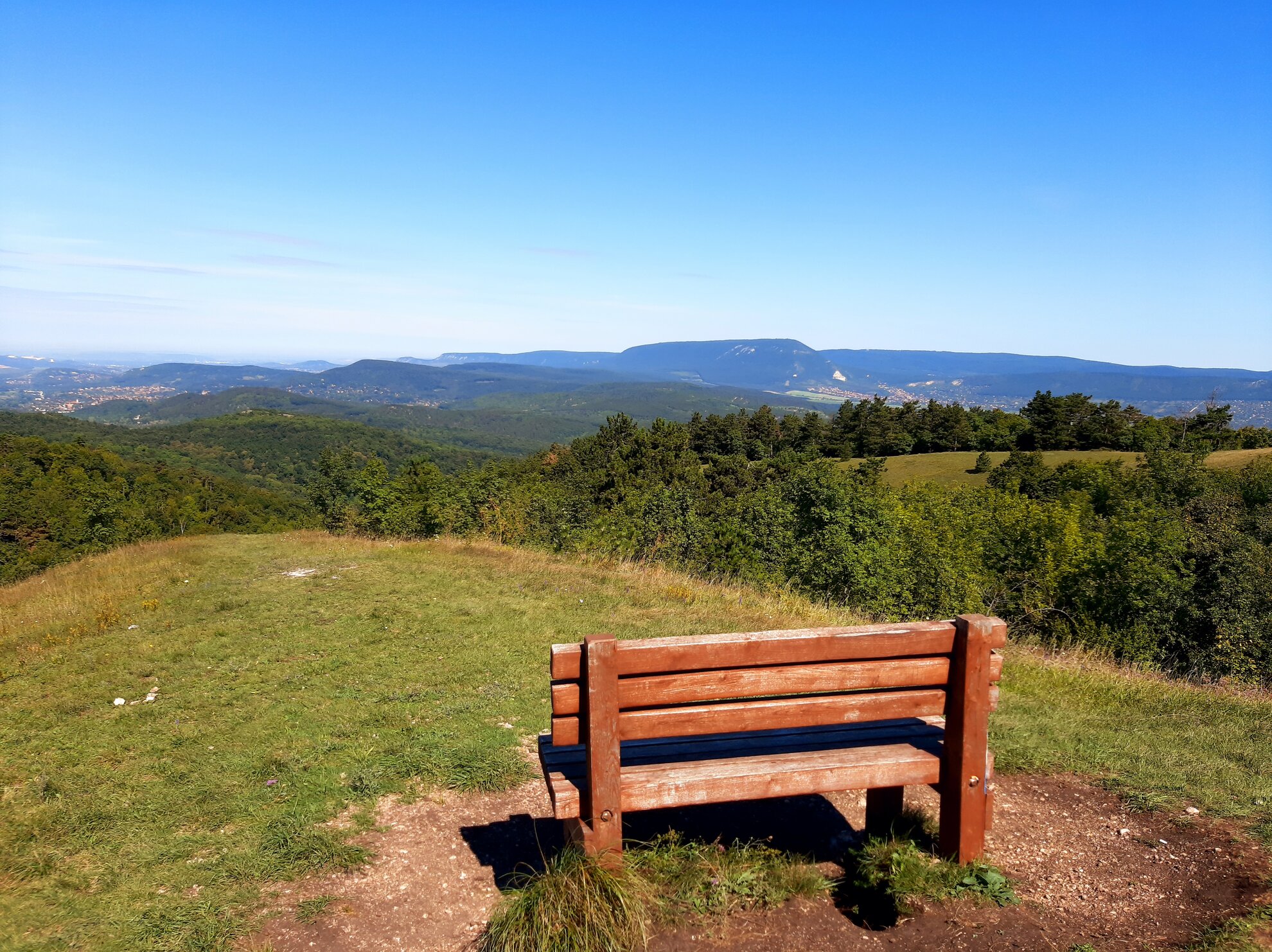
The blue trail sign continues across the hilltop towards Kutya-hegy, so take the red sign if you only want to take 90 minutes to two hours to get back to Nagykovácsi. However, don’t turn to the red sign by the wall memorial, as this takes you to Pilisszentiván, which is a long and very winding trek!
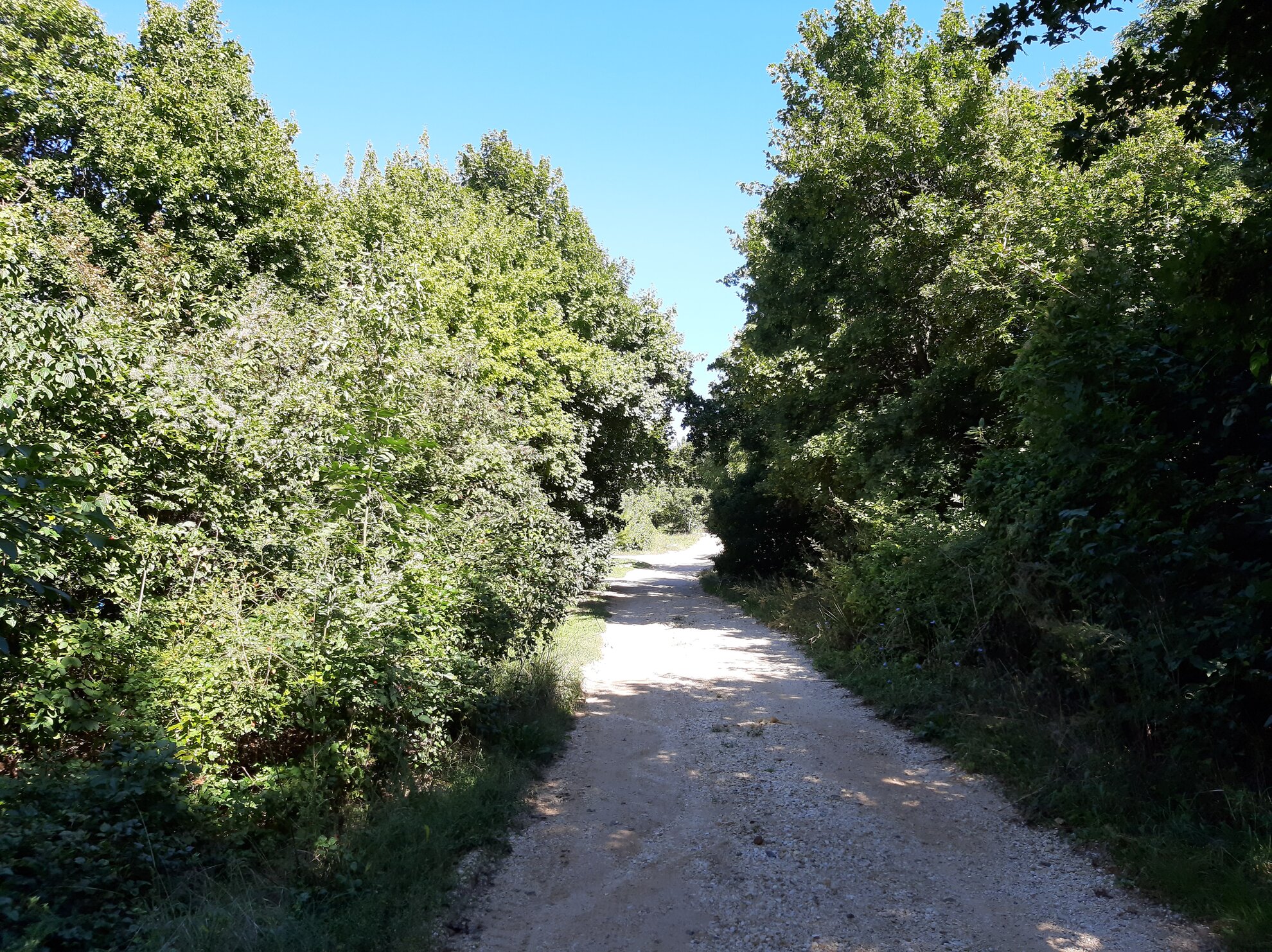
The correct red sign is on the hilltop, on the open rock grass, painted on a pile of trees. Closing the loop with a sharp bend, where you started out, you head back down a rather steep and stony path to the village, via Szeles utca. Walking through, you find yourself back at the cemetery, and from here the terrain will be familiar. If you have time before the bus leaves from Nagykovácsi and feel a bit peckish, the Tandem café at Kossuth Lajos utca 40 doubles as a bookstore and cosy community spot.
